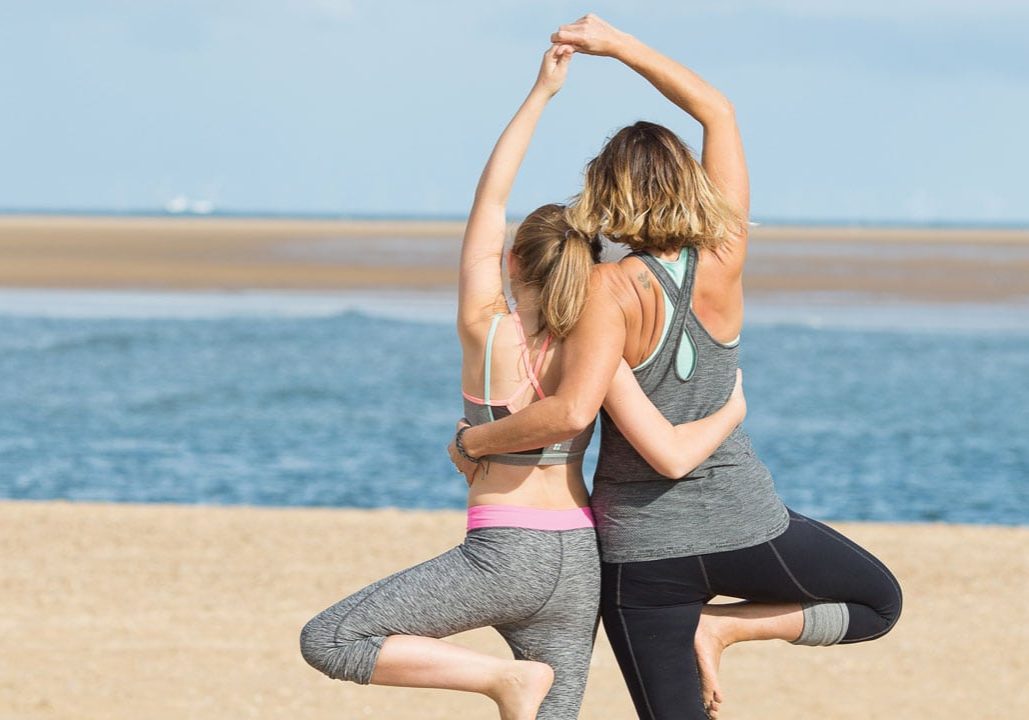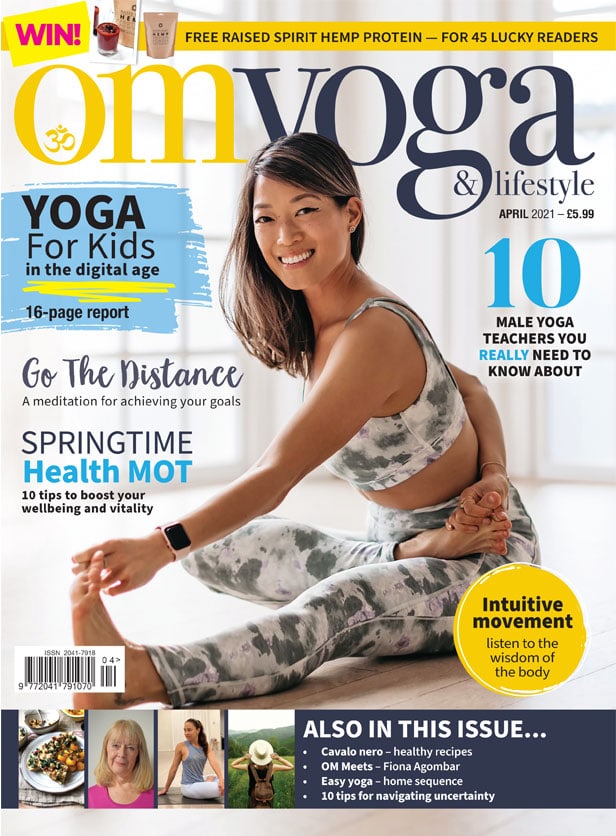
5 yoga & mindfulness practices
Save the children: 5 yoga and mindfulness practices for greater relaxation, calm and ease. By Jackie Heffer-Cooke
Our generation of ‘Zoomers’, or Generation Z, has had a very fast, progressive society to get their heads around. Mobile phones, social media, fake news, demands of online communities, increased exam pressure, an emphasis on our civilisation’s demands for productiveness…and now the pandemic and all the issues that brings. And that’s just aside from the normal ‘being human-ness’, of puberty hormones raging, sibling, peer and parent pressure and finding a place in the world. So, what can we do to help?
How the human condition deals with thoughts
First, let’s understand the teenage brain. It’s only been the last 200,000 years we have been modern humans: homo sapiens. The ‘Sapiens’ translates roughly into ‘wise’. The more developed neocortex of the sapiens means we are aware of ourselves. The upside of this: planning, connecting, building relationships, solving problems, speech. The downsides: worrying, deliberating, fearing for ourselves, for others, wondering why we are all here, and how we are going to die.
We analyse everything, based on how much threat it is to us. As adults we can start to negotiate our way through this (a bit); as teens, it is at times totally confusing. What is a real threat to us and what is not? So much to worry about! Friendship groups, gossip, the opposite sex, parental expectation, school expectations, exams, career choices, sibling comparisons, how we look, Instagram, Facebook, Snapchat… the list is endless! It’s no wonder teens experience huge anxiety, which only seems to be getting bigger all the time as we ‘advance’ in this modern world.
In neurology, the regions of the pre-frontal cortex activate error signals, which are there to help you generally – to help you NOT do things like walk into the sea out of your depth without learning to swim. Error signals work like ‘stop-signs’. The problem is we also have error signals which are known as concepts like judgements and self-criticism – we believe these are ‘life savers’ too! They are there to keep us in good survival. But they are less tangible, they take different forms, have different interpretations, and can mean different things to different people. So much harder to analyse…so let’s spend all our time just worrying about it instead!
To the mind and the body all these threats are as real as each other, and this leads to the stress response system being switched on. The stress response system is when we are in what is called the sympathetic nervous system. If we spend too much time living in the sympathetic nervous system, we get ill, physically, mentally, holistically; it’s as simple as that. Anxiety and depression become the norm, and we struggle.
When we are in the opposing nervous system, called the parasympathetic nervous system, we are flooded with endorphins. Endorphins are the ‘feel-good’ hormones in the body; they give us our sense of wellbeing and calm, they also encourage all the body systems to work effectively – this is good health and wellbeing.
Often, through lack of sleep, worries, school concerns, relationship problems, social media bullying, or social media perfectness, and many other seemingly uncontrollable happenings, teens can experience levels of stress, anxiety, loneliness or depression. The stress response system is over-active, which may result in ill health.
How yoga can help
Yoga understands the human condition has real emotions and threats that pull us around from minute to minute, day to day, by all kinds of people and situations, by all kinds of interpretations and thoughts – by our life roles and stories.
We can take ourselves out of the stress response system, the sympathetic nervous system, and encourage endorphins and other chemical goodies back into our body, guiding us back into the parasympathetic nervous system by using different techniques. All these techniques mean the mind becomes more meditative and focused on positive thoughts, thus less likely to use the damaging self-talk which throws the adrenalin in.
1. Mindfulness
We also know that chronic stress can cause the brain to shrink! It can cause long-term damage by creating more myelin-producing cells and less neurons (do your research here, it is fascinating). Mindfulness is about living in the present moment. When we do that, the brain can take a break from its negative thinking, from the exhaustion of continuous busyness, the past, the future, the problems, the planning…and it can just ‘be’. So, mindfulness redresses the balance, and gives us a ‘brain rest’ for a while. It teaches us to be in the present moment, and to begin to enjoy the small moments in life that bring us happiness and joy and teaches us to do more of them.
The practice: Tune into something you love for 10 minutes regularly: food, music, yoga, nature, art. It doesn’t matter what it is, the point is to focus on it, to really focus on it…and if the mind wanders off, keep bringing it back. Breathe and bring your full awareness to what it is you are doing.
2. Progressive relaxation
When the muscles are all totally relaxed the body knows it is not in a state of tension and it begins to introduce endorphins; the parasympathetic nervous system and a state of calm and wellbeing follow.
The practice: Once you have arrived on your mat, your chair, or in your relaxation position, mindfully work through the body letting go and relaxing muscle groups. It’s nice to work from head to toe, or toe to head, progressively relaxing muscles around the body.
3. Breathing techniques
When we slow our heart rate down by using deep breathing, physiologically our heart rate slows, our breathing deepens, and endorphins are sent into our bodies promoting good health and a calm state of mind.
The practice: Take time to arrive on your mat. To draw a line under the rest of the day. Be aware of what is flickering around in the mind, then begin to let it go and draw attention to the body. Be aware of your breath: how does it feel today? Our breath can often tell us our state of self. Have we been holding it all day? Holding on? Is it choppy and even a little erratic? Is it lethargic and slow? Or is it calm and fresh? Don’t make judgements, just be aware. Then take gentle control, breathing in, pause, breathing out, pause. Just like a wave of breath. Repeat.
4. Checking in Teaching
teens how to check in on themselves throughout the day is an amazing skill. Teach them how to observe how they feel, to not judge how they feel, to even care about how they feel and to be kind to those feelings.
The practice: Close your eyes, get comfortable for a moment, and ‘check-in’: How am I? What is that I am feeling? How can I observe it? How can I help it? How can I be with it? Then focus on your breath for a few moments, and perhaps repeat a simple affirmation three times that you need (for example, “I am calm”) before coming back to your day.
5. Self-kindness
Above all, teach children how to be kind to themselves. Sometimes, when we are really bothered by a situation we may be in, it’s a really good idea to look at it as if you were your own best friend.
The practice: If your friend made a mistake and they felt sad, or ashamed, or guilty and explained to you what they had done, would you be horrible to them? Would you punish them? No. You would support them, ‘hold’ them, comfort them. If your friend was feeling great and had done a wonderful thing, would you congratulate them? Yes, you would. Teaching our teens to treat their own self, the way we would teach our friends, is perhaps the best lesson of all. Then our own inner space becomes a happier, friendlier, more peaceful place to be.
Jackie Heffer-Cooke is a trainer in children’s and teens yoga and mindfulness. Find her training courses for all at zenmuma.co.uk and her trainings specifically for teachers and schools at zenkids.co


